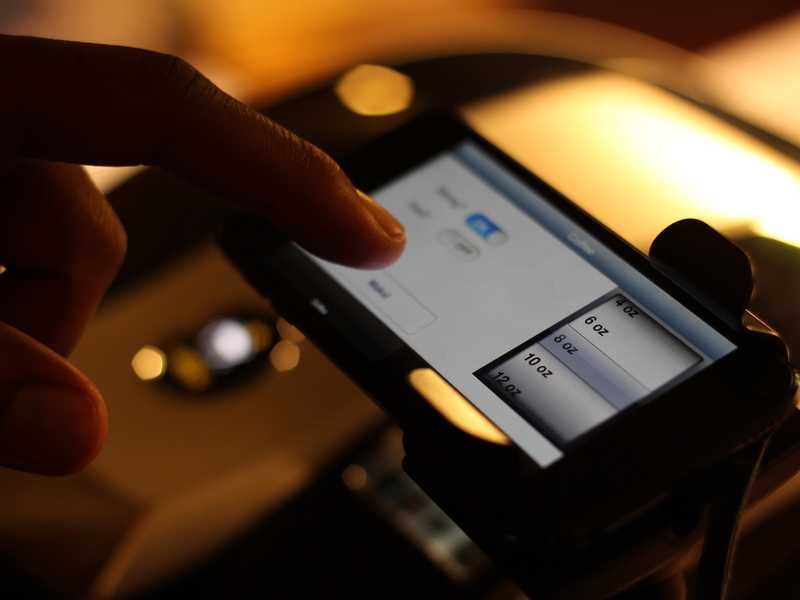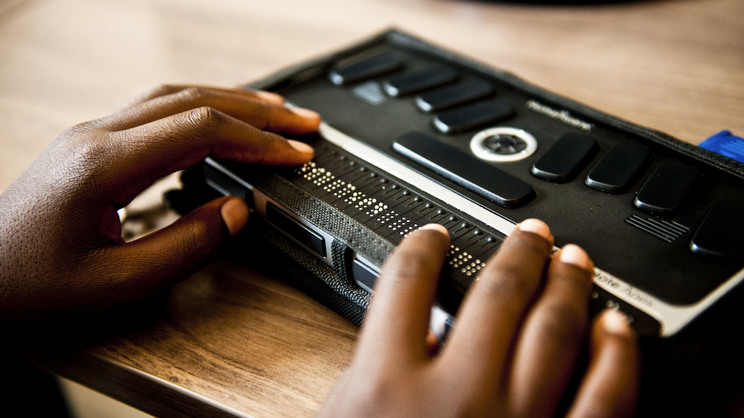Empowering Self-reliance With Assistive Technology for the Blind
The combination of assistive innovation into the lives of individuals with aesthetic problems stands for a substantial improvement in promoting freedom and self-sufficiency. From cutting-edge display visitors to innovative clever canes, these devices not just enhance day-to-day navigation and interaction yet likewise encourage users to engage meaningfully in numerous aspects of life. As we discover the myriad benefits and real-world applications of these modern technologies, it becomes crucial to check out the hidden variables that add to their effectiveness and the possibility for future advancements in this essential field.
Overview of Assistive Innovation

The development of assistive modern technology is grounded in concepts of inclusivity and empowerment. Innovations in software program, equipment, and sensory improvements offer customers with options tailored to their specific needs. From display readers that convert message to speech, to tactile tools that convey details through touch, these devices change the method people engage with their surroundings.
In enhancement to functional applications, assistive modern technology cultivates greater social addition and participation in different markets, consisting of education and learning and employment (Braille displays and notetakers). As r & d remain to evolve, the capacity for assistive innovation to further enhance the lives of visually damaged people remains promising, paving the method for an extra fair culture where everyone can prosper
Types of Assistive Devices
A variety of assistive gadgets have actually arised to sustain individuals with aesthetic disabilities, each developed to satisfy specific demands and enhance daily performance. These gadgets range from low-tech remedies to high-tech advancements, providing varied options for users.
Low-tech devices consist of magnifiers and large-print materials that aid in reading and writing. Braille devices, such as Braille styluses and slates, make it possible for tactile analysis and interaction. Positioning and wheelchair aids, like white walking sticks, aid individuals navigate their environment safely.
On the higher end of the spectrum, electronic zoom systems and display readers use significant support. Digital magnifiers allow users to expand message and pictures on displays, while display viewers convert digital material into manufactured speech, assisting in access to details on smartphones and computers.
Mobile phone applications additionally play an important duty, offering features like message recognition and navigation aid. Wearable innovation, such as wise glasses geared up with increased reality, is becoming an appealing tool to boost situational awareness.
Benefits of Assistive Modern Technology
The integration of assistive innovation substantially enhances the high quality of life for people with aesthetic disabilities. These technologies empower customers by advertising freedom, allowing them to navigate their environments more successfully and do day-to-day tasks with higher convenience. For example, display visitors and zoom software allow people to access digital details, fostering instructional and expert chances that might have formerly been out of reach.
Furthermore, assistive devices such as wise walking sticks and GPS applications supply real-time navigation help, enhancing mobility and safety. This boosted autonomy not only boosts self-confidence however likewise motivates social engagement, enabling individuals to get involved even more totally in their neighborhoods.
Assistive technology also facilitates communication, assisting individuals link with others with voice recognition and text-to-speech applications. This capability is important for preserving partnerships and accessing essential info.
Additionally, the personalization choices readily available with lots of assistive modern technologies ensure that individuals can tailor tools to their specific demands, even more enhancing functionality and performance. On the whole, the advantages of assistive innovation for individuals with visual disabilities are profound, advertising an extra inclusive society where everyone can pursue their objectives and aspirations.
Case Studies and Success Stories
Highlighting the transformative effect of assistive modern technology, various instance research studies highlight just how individuals with aesthetic problems have effectively incorporated these tools into their lives. One engaging example includes an university pupil that utilized screen reading software application to browse on-line resources and academic materials properly. This technology not just facilitated her education but likewise boosted her self-confidence in joining conversations and team tasks.
Another study includes a professional that utilizes a mobile phone application created for navigation and object acknowledgment. By utilizing this application, he has regained autonomy in both his personal and job settings, allowing him to commute individually and involve with associates a lot more effectively.
In addition, a senior citizen shared her experience with braille e-readers, which allowed her to access a substantial selection of literary works and stay attached with her neighborhood through publication clubs.
These success stories highlight the vital role of assistive modern technology in cultivating freedom, boosting quality of life, and promoting social assimilation for individuals with aesthetic disabilities (Speech-to-text devices for low vision). By accepting these innovative devices, users can conquer challenges and seize opportunities that add to their expert and personal fulfillment

Future Patterns in Assistive Innovation
Advancement in assistive modern technology is positioned to redefine the landscape clear eyeglasses of assistance for individuals with aesthetic impairments. Emerging fads stress the assimilation of synthetic knowledge (AI) pediatric vision and machine understanding, which improve the performance of gadgets that aid with navigating and information accessibility. AI-driven applications are currently qualified of analyzing visual information in real-time, enabling users to involve with their atmosphere much more independently.
Furthermore, the advancement of wearable technology is progressing swiftly. Smart glasses geared up with increased reality (AR) can give audio descriptions of surroundings, changing just how users engage with public rooms. These tools not just advertise autonomy but also foster social incorporation.
Furthermore, the Web of Things (IoT) is making homes smarter, enabling smooth connectivity between assistive gadgets and everyday appliances. This connection empowers individuals by making it possible for computerized responses and voice-activated controls customized to private needs.
Conclusion
To conclude, assistive modern technology plays a critical duty in empowering individuals with aesthetic problems by improving their independence and interaction with their environments. The varied variety of applications and tools available not only helps with navigation and interaction yet additionally advertises social integration and opportunities for specialist and individual development. As advancements proceed in this field, the capacity for enhancing the top quality of life for those with aesthetic problems will certainly broaden, fostering higher freedom and empowerment.
